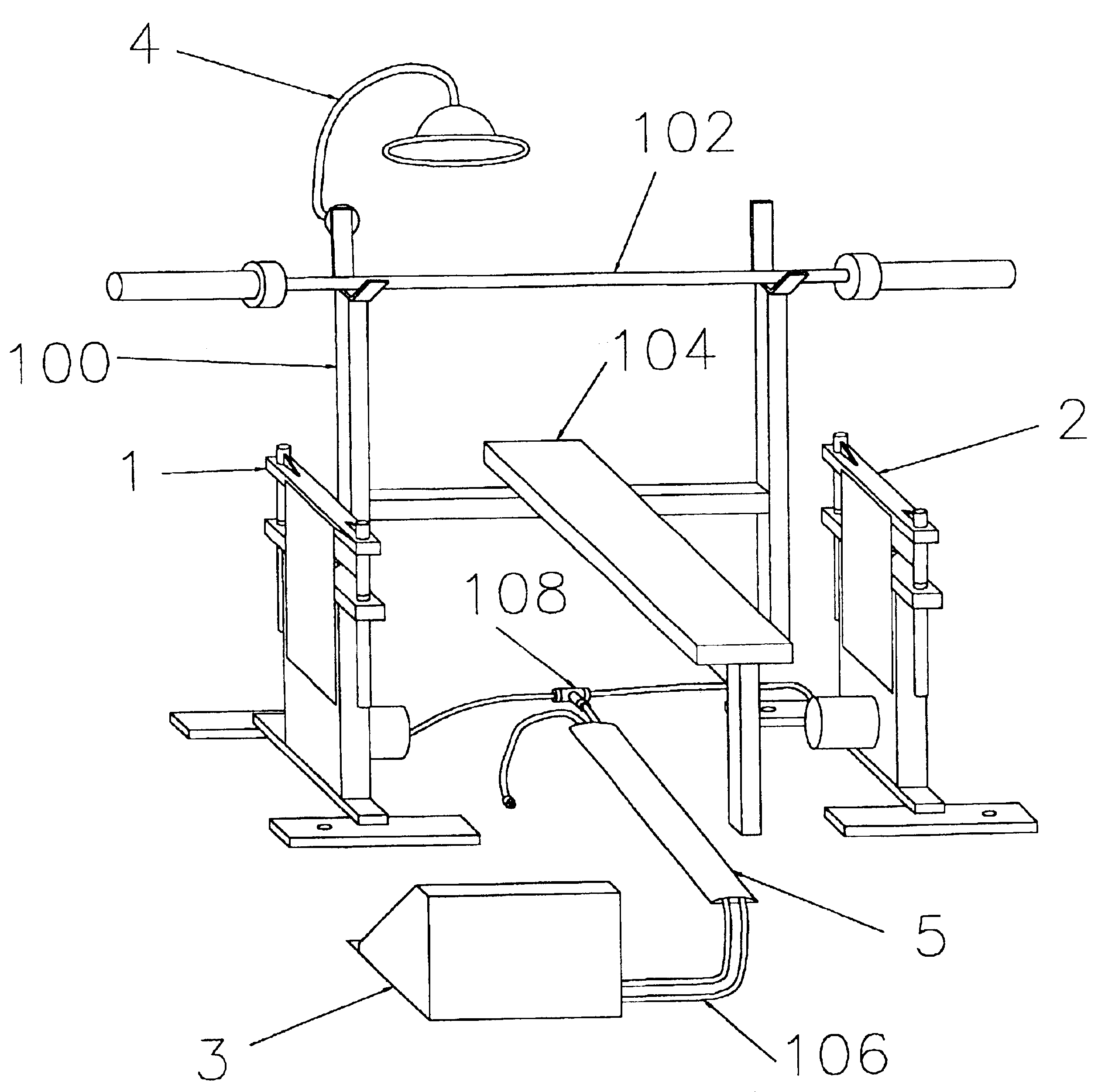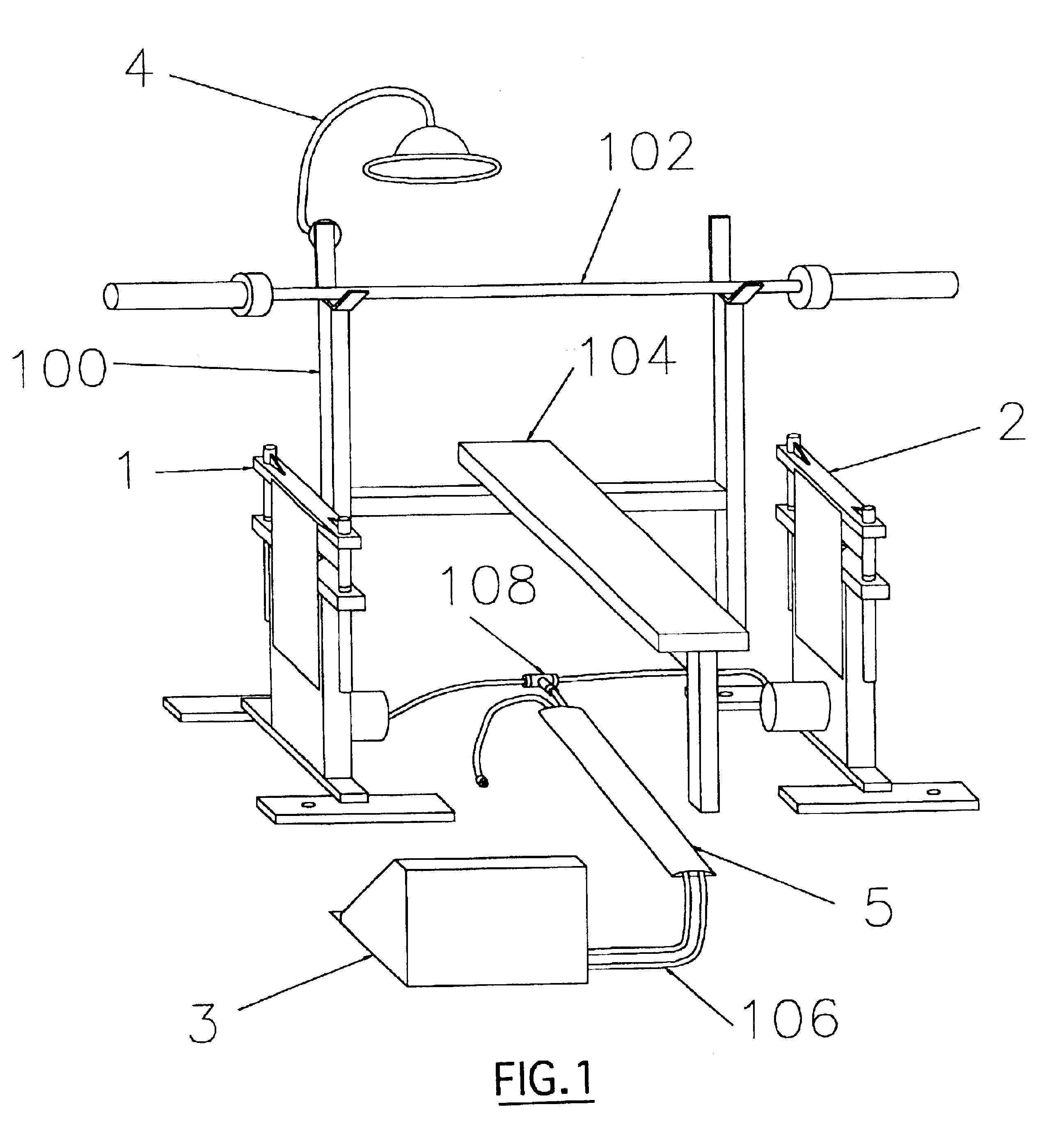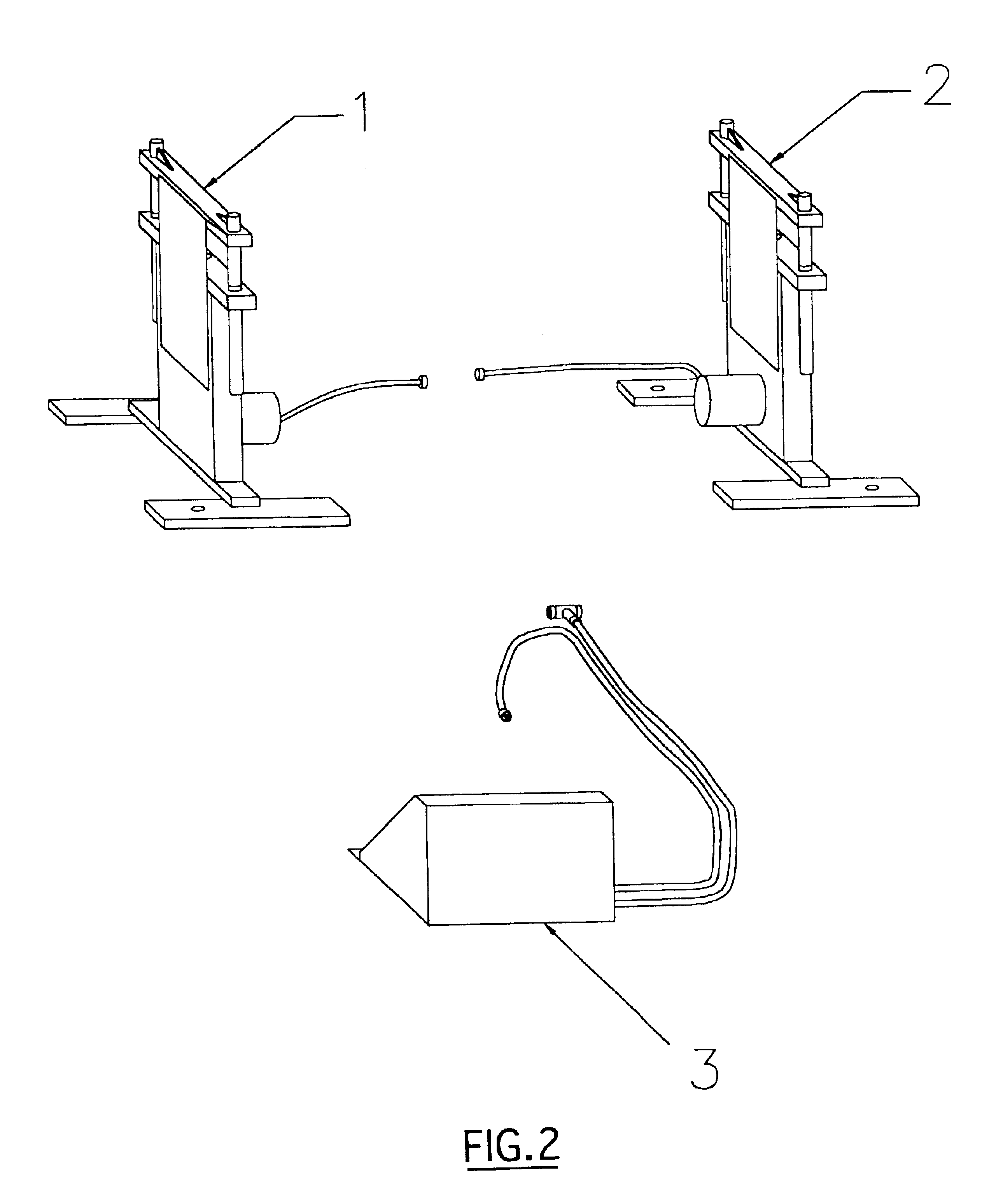Self-spotting bench press apparatus for progressive lift distance training
- Summary
- Abstract
- Description
- Claims
- Application Information
AI Technical Summary
Benefits of technology
Problems solved by technology
Method used
Image
Examples
Embodiment Construction
[0023]The present invention, as shown in FIGS. 1-6, is a self-controlled system, which enables powerlifting athletes to perform bench press exercise safely and effectively by enabling them to simulate the effect of having a spotter and a stack of wood boards on their chest for the purpose of progressive lift distance training. Referring to FIG. 1, the invention includes two safety stands 1 and 2 that can be placed on either side of an existing bench 104 of a bench press 100 that will provide for selectable, incremental raising or lowering and holding in place of the barbell as determined by user input during the time of exercise with no requirement for barbell attachments. Two safety stands 1, 2, each with its own actuator, attributes to the inventions safety through redundancy and portability by being able to be placed directly under the barbell 102 with a maximum height of not more than 26 inches in the retracted position. The stands are sized so that they will hold the barbell is...
PUM
 Login to View More
Login to View More Abstract
Description
Claims
Application Information
 Login to View More
Login to View More - R&D
- Intellectual Property
- Life Sciences
- Materials
- Tech Scout
- Unparalleled Data Quality
- Higher Quality Content
- 60% Fewer Hallucinations
Browse by: Latest US Patents, China's latest patents, Technical Efficacy Thesaurus, Application Domain, Technology Topic, Popular Technical Reports.
© 2025 PatSnap. All rights reserved.Legal|Privacy policy|Modern Slavery Act Transparency Statement|Sitemap|About US| Contact US: help@patsnap.com



